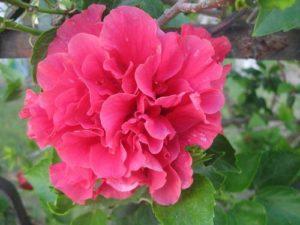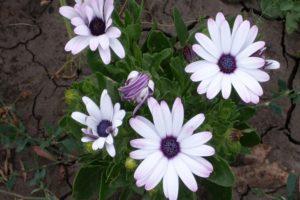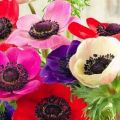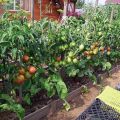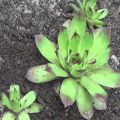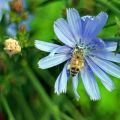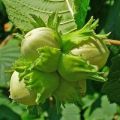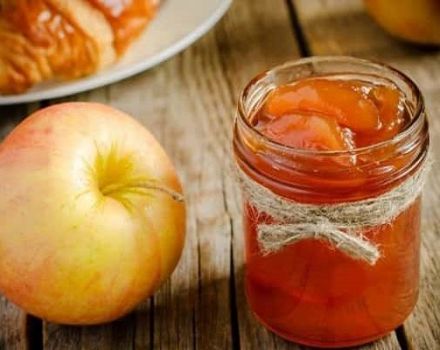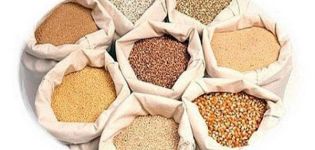Planting and caring for gazania in the open field, reproduction and cultivation
Gazania (gatsania) is a beautiful ornamental plant, which is called "African chamomile" for its origin and similarity to the well-known wildflower. Despite its southern roots, the plant grows well and blooms in temperate climates. In addition to the beautiful and varied inflorescences, the popularity of this culture has brought the fact that planting and caring for gazania in the open field does not require significant effort.
Botanical description
Outwardly, gazania is a plant that has the following features of the main vegetative and generative organs:
- Stem - this small plant does not have a stem; leaves and flower stalks with inflorescences are formed from the buds on the root collar.
- Leaves are lanceolate, pinnately dissected, lobed, grayish-green in color, often pubescent on the underside, collected in a compact or spreading basal rosette.
- Flower (inflorescence) - a basket with ligulate petals of various colors (from white, red and yellow to two-color) and the middle part is red or yellow. The diameter of the inflorescence, depending on the variety and type of plant, can range from 5 to 12-15 centimeters. The inflorescence is located on a vertical (stiff) or slightly drooping peduncle up to 30 centimeters high.
- The root system is pivotal, well-developed, penetrating to a depth of 60-80 centimeters.
- The fruit is a dry achene with a small white hair tuft.
Gazania blooms from mid-summer to early autumn (July-September). The fruits ripen in mid to late September.
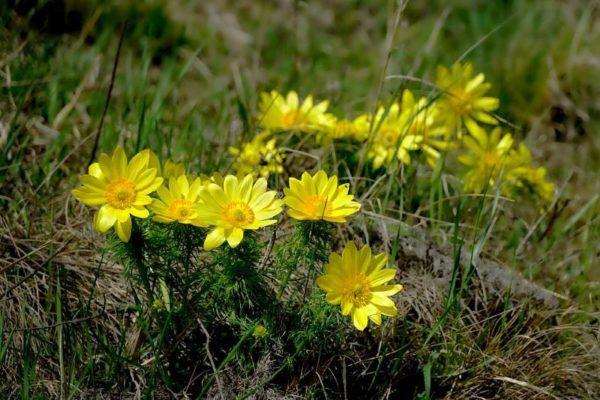
Types and varieties
The genus Gazania includes species such as:
- Long rifle gazania.
- Gazania is feathery.
- Gazania is snow-white.
- Gazania is one-flowered.
- Gazania peacock.
- Gazania is harsh.
- Gazania Potsi.
- Gazania is hybrid.
Of all these species, the hybrid is the most resistant to environmental conditions - bred by crossing various gazanias, it combined all their positive qualities, as well as a variety of flower colors.
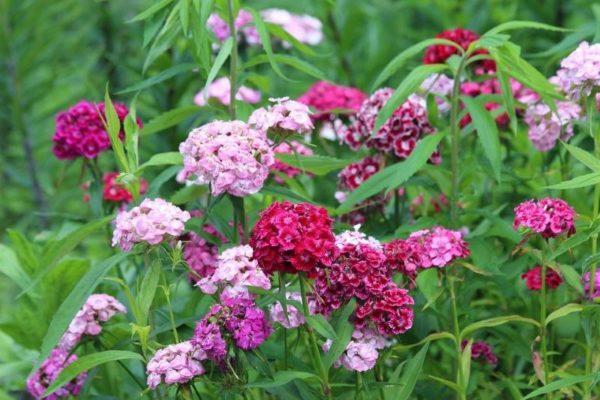
On a note. Despite the fact that most types of gazania are perennial, in temperate climates it is advised to grow them as annuals. This is due to the low resistance of the southern plant to low temperatures - the culture is able to withstand short-term frosts down to -7 ° C. In the conditions of severe frosty and little snowy winters, it can freeze out even with good insulation.
The most popular among flower growers are such varieties (series and mixtures) of this plant as:
- Big Kiss Yellow Flame;
- hybrid mixture;
- Riddle;
- New Day Red Shades;
- Garden Star;
- Frosty Kiss Orange;
- Triad.
All these varieties are grown in annual crops.
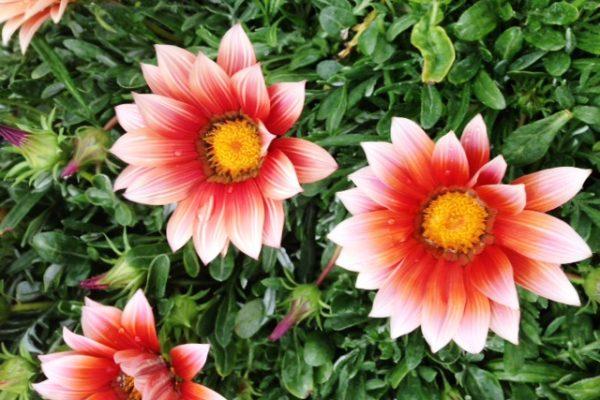
How to grow a plant correctly?
The success of growing even such an unpretentious plant as gazania depends on the correct choice of the place and time of planting, the timely implementation of care measures.
When to plant?
This culture is grown in seedlings. To do this, in the first decade of March, seeds are sown in shallow boxes or other containers. Seedlings are grown in such boxes at a temperature of +18, +20 0С. Seedlings emerging from seeds on day 12-15, when 2 true leaves appear, dive into small peat pots, where they grow to the required size.
Well-formed bushes with 3 true leaves are planted in open ground in early May. Choosing a place for planting. For planting seedlings in open ground, well-lit and elevated areas are selected. Lowered and flooded with melt and rainwater are not suitable for this plant.

Also, it does not tolerate gazania and shade, therefore it is not recommended to plant it near large trees, outbuildings, bushes. Required soil This crop is grown both on fertile loamy and peaty soils, and on sands and loose loamy sands, poor in nutrients. Heavy, poorly permeable clay soils, peat bogs with a close occurrence to the surface of groundwater are not suitable for it.
Planting process
The grown and matured seedlings are planted in open ground. The planting process itself consists of the following stages:
- On the selected site, at regular intervals (15-20 centimeters - for undersized varieties, up to 25-30 centimeters - for tall varieties), holes are made with a garden spatula with a diameter of 10-12 centimeters and a depth of 7-8 centimeters.
- The seedling is removed from a peat cup, placed in a planting hole, sprinkled with earth, compacting it with your fingers.
- After planting, all the plants are watered, after which the soil around them is mulched with a small layer of humus or fertile soil.
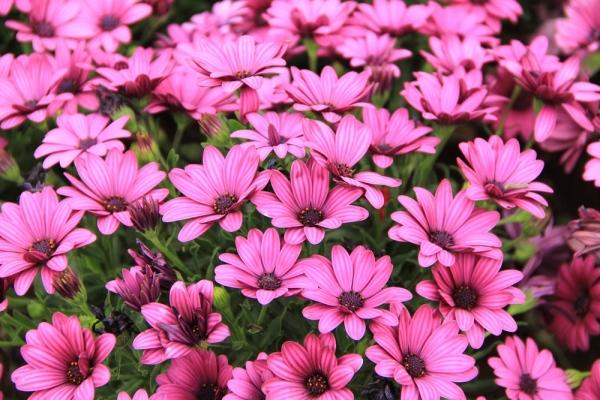
Important. In order for the seedling with a clod of earth to be better removed from the peat pot, the day before planting the seedlings in open ground, watering it is stopped.
Crop Care Tips
In order for the plant to please the eye with beautiful flowers, it must be properly looked after - weeded, watered, fed, pruned in time, and when grown as a perennial crop - covered for the winter.
Weeding and loosening the soil
The seedlings planted in open ground are weeded after each watering or heavy rain. In addition to removing weed shoots, loosening allows you to destroy the soil crust, thereby improving air access to the root system and reducing moisture evaporation through the system of the smallest soil capillaries. Loosening and weeding is often replaced by mulching the soil around the plants with a 3-4 cm layer of humus.
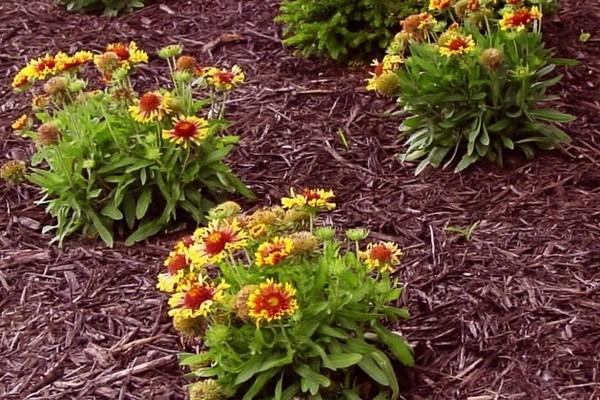
Watering and feeding
Gazania is highly drought-resistant, and requires watering only in the first 10-15 days after planting in open ground. At this time, it is watered often and abundantly. As soon as the seedlings are well rooted and begin to grow noticeably, abundant watering is stopped, and their frequency is adjusted, taking into account precipitation.
So, if the summer is rainy, and there is enough moisture in the soil, watering is carried out at a frequency of no more than 3 times a week. If a prolonged drought occurs, up to 4 waterings are performed per week.
On fertile soils, gazania is fed with special complex fertilizers no more than 1 time per month. In this case, fertilizing is combined with watering. On soils with a low nutrient content, feeding is performed more often - every 15-20 days.
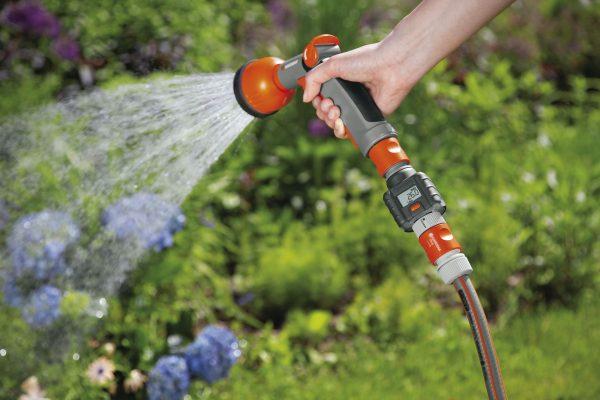
Pruning
In order for gazania to grow and develop normally, broken and damaged leaves, wilted peduncles with crumbling inflorescences are periodically removed. For such a procedure, use a sharp and clean knife, scissors.
Wintering plants
In most cases, gazania are grown as annuals and are not covered for the winter. In some cases, in order to extend the life of the plant, for 1 year it is dug up together with a lump of earth for 1 year, placed in volumetric pots, all peduncles and wilted leaves are removed and placed in a moderately humid and cool room with a temperature during the winter season no more than + 12, +14 0С. The soil in the container, as it dries, is carefully moistened with a hand spray bottle.
Perennial species are cut off completely and covered with straw, spruce branches, dry foliage.
Protection against diseases and pests
Gatsania is a very resistant crop to diseases and pests.
Of the diseases, with improper care, it is most often affected by gray and white rot - with a high level of damage to plants, they are sprayed with Bordeaux liquid or such a safe biological fungicide as Fitosporin-M.
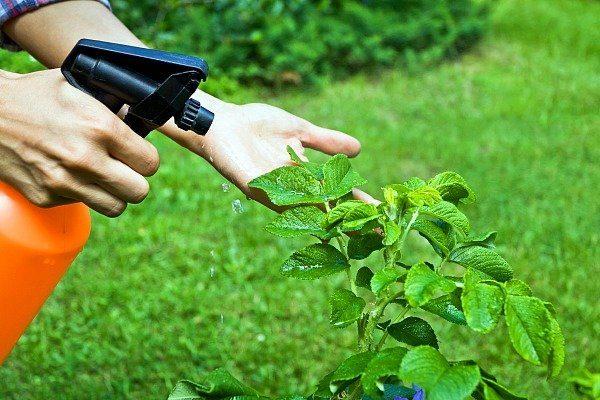
Among pests in especially humid years, snails and slugs are dangerous to gazania, which can damage its young leaves. The fight against such large pests is carried out without the use of chemicals - they are collected by hand.
Breeding methods
Propagation of gazani is carried out both by generative (seeds) and vegetative (by dividing the bush, cuttings) methods.
Seed method
With this method of reproduction, the faded inflorescences are not cut off, but covered with a plastic bag, allowing the seeds to ripen and not crumble. In the future, the basket is cut off and placed at home to dry in a small paper bag. Since the seeds of this culture, like those of dandelion, have feathery crests, they are well carried by the wind. Therefore, with a delay in the timing of collection of seeds, their chaotic self-seeding occurs on the site and adjacent lands.
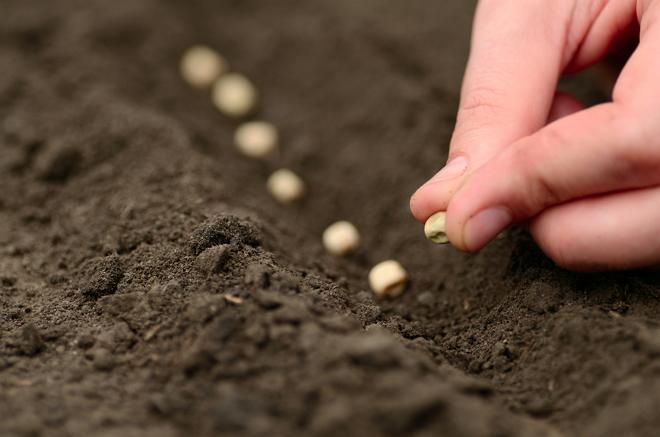
It is advised to collect seeds in this way from well-developed plants that are not damaged by diseases and pests.
Dividing the bush
In addition to the seed method, gatsania can also propagate in such a vegetative way as dividing a bush. For this, well-formed plants are used. The bush of such a gatsaniya is carefully dug up and divided into two new bushes with a sharp knife or spatula, each of which should have at least 4-5 healthy leaves. New plants are first placed in separate small containers, given some time to take root, and only after that they are planted in open ground.
Cuttings
A small, 10-centimeter lateral shoot with a "heel" at the base is cut off from the bush. The resulting stalk is first placed in a liquid with water for a day, before planting, its lower cut is powdered with Kornevin. Cuttings are planted in small separate containers, to a depth of no more than 9 centimeters. It is possible to cut gazania in this way throughout the year.
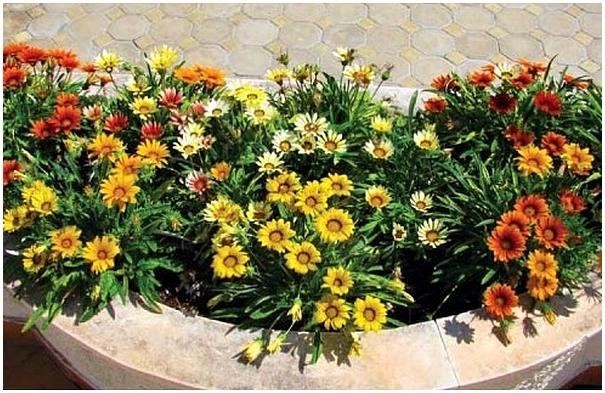
What problems do gardeners face with growing, and their solution?
The main problems that growers face when growing gatsania from seeds or seedlings are the following:
- Drying - occurs with the formation of soil cramps, a very long drought. This problem is solved by frequent watering and loosening of the soil in order to destroy the soil crust.
- Poor survival - a rather unpretentious culture does not take root only in cases of planting it on too dense, swampy and heavy soils. In order to avoid such a situation, experts advise to carefully select a place for planting a crop - taking into account not only its illumination, but also the mechanical composition of the soil.
- Frost damage - this problem can be caused by early planting of seedlings in open ground. Based on this, experienced flower growers do not recommend planting gazania bushes on the street before the beginning of the second decade of May.
- Poor wintering indoors - as a rule, even a well-formed one-year-old bush or gazania seedling, when stored in a room with low humidity and low air temperature, will quickly die from the combined effects of these two factors. To prevent such a development of the situation, the dug out plants are placed for the winter on glazed balconies, loggias, storage rooms and other premises located next to living rooms.

Gazania in landscape design
In landscape design, gazania is used in compositions such as curbs, mixborders, alpine slides, flower beds. Annual species are also often planted in various flowerpots, which decorate the edges of garden paths, porches, and gazebos.
Any perennial type of gazania is grown in a permanent place for several years, both in combination with other crops, and alone.
